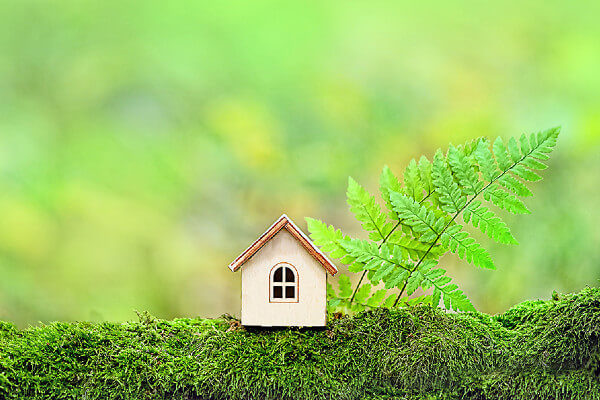Make Your Home More Eco

Making your home more eco friendly will save you money – as well as helping to save the planet!
With so many of us working from home now, our home is the place where we spend most time – so for anyone wanting to lessen their carbon footprint and generally live a more ecofriendly lifestyle, tackling our house is one of the first places to start.
Happily, there’s a number of very simple ways in which we can make our homes more eco-friendly. And as a bonus, many of these will also save us money.
For a start, if you haven’t already, install a smart meter. You will be able to see at a glance how much energy you are using, to identify energy-sapping appliances – and identify where you could be making savings. Then consider a smart home system (such as Hive), which will allow you to turn appliances on and off (via a smartphone app) even when you’re not home.
Talking of saving electricity, how about installing solar panels? Look out for the return around Easter 2022 of the Tring Solar PV Club, formed by Tring in Transition, a group that aims to help us achieve a more sustainable way of living. Tring in Transition’s Brian Kazer says that installation on a semidetached house could be as little as £3,500.
If you live in the HP23 postcode area, just restarting is their Thermal Imaging project, which shows how your home is affected by heat loss. Once the report has been completed, the group can offer some practical suggestions to help you tackle the areas that show where most heat is escaping.
Next, turn attention to your boiler. Make sure it’s serviced regularly, so that it operates as efficiently as possible. And if you are contemplating replacing your boiler, start thinking outside the box. A biomass heating system heats your home and provides hot water, but instead of oil or gas, it is fired by sustainably sourced wood pellets. This fuel is pretty much carbon neutral because the carbon dioxide that is released when it is burned, was absorbed by the tree while it was growing. Clever eh?
Or you could look at heat pumps, which have low energy consumption, and don’t need an oil tank or gas pipes – perfect for a rural property. When it comes to appliances, look for those with the highest energy rating – A – for the most efficient. If you drink a lot of cups of tea or coffee now you work at home, invest in an eco-kettle, which uses less energy and boils quicker.
Reusing homeware and furniture is the perfect way to be eco friendly. Check out Returned to Glory in Berkhamsted, a fantastic organisation with clever creative volunteers who turn donated items into desirable pieces to grace any home. Items that have been upcycled and reupholstered can be found in their Northbridge Road showroom, with profits going to the Hospice of St Francis.
You can also buy second hand in all of the wonderful charity shops in Tring and Berkhamsted and of course Tring’s Market Auctions.
Finally, if it’s broken, fix it at the Repair Cafe on the first Saturday of every month, 9.30am-12.30pm, at Open Door, on Berkhamsted High Street. You can have a nice cuppa and slice of cake while you wait too! Find out more at www.opendoorberkhamsted.co.uk/repair-cafe.
Sustainable materials
If you are building an extension (especially on a period home), you can consider reclaimed bricks – which will not only be more in keeping with your property, but will keep down your carbon footprint.
You can also look for sustainable insulation – such as sheep’s wool, hempcrete, and cellulose insulation (made from recycled newspaper, fibreglass and fire retardants).
When choosing wood, look at bamboo, which grows fast (it can be harvested after five years while oak takes 40 years to grow), but do consider the carbon footprint as it has to be imported to the UK. Engineered timber, along with natural stone sourced locally, has a smaller carbon footprint than concrete or steel.
Keep energy costs down
Low-cost suggestions for saving energy:
- Reduce your heating thermostat by 1% (unless you have small babies or people with severe respiratory problems in the house), and add extra layers if needed.
- Close all curtains at dusk.
- Check that radiator heat is not escaping behind the curtains.
- Use draught excluders at front and back doors.
- Turn down radiator thermal valves in unused rooms.
- Check loft insulation – and that the cold water tank and pipes are insulated too.
- Put up a thick lined curtain at the front door, and draw it at dusk.
- Check that you have cavity wall insulation.
- Switch off lights when you leave the room.
- Change all bulbs to LED.
